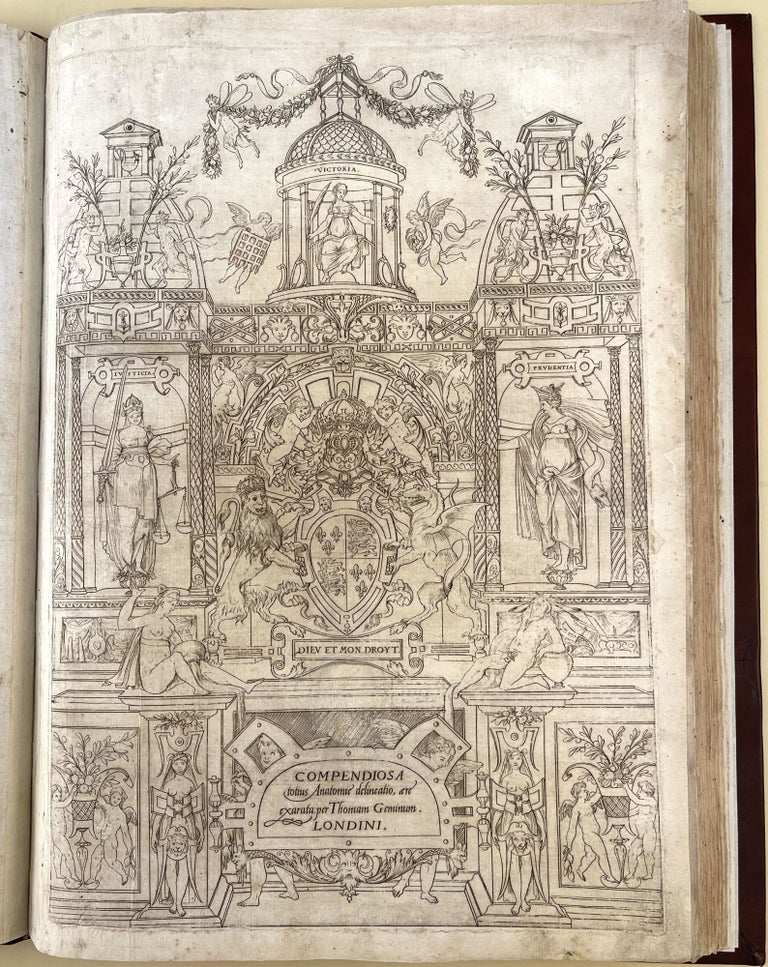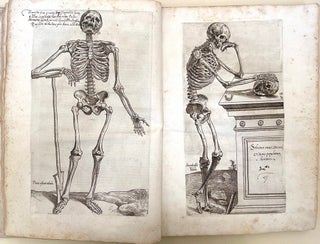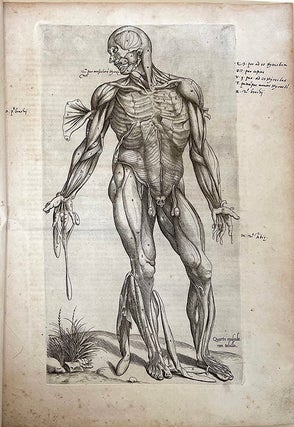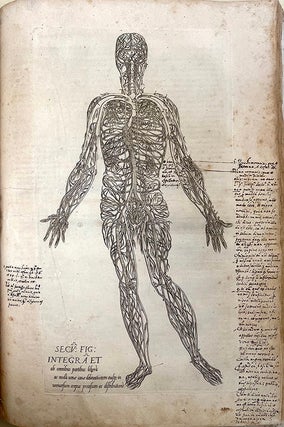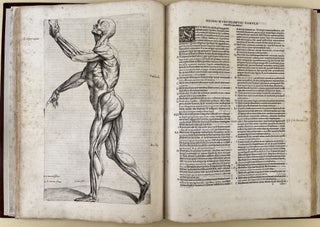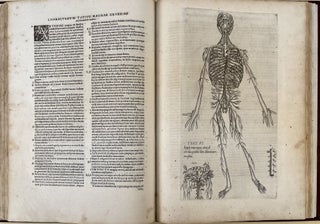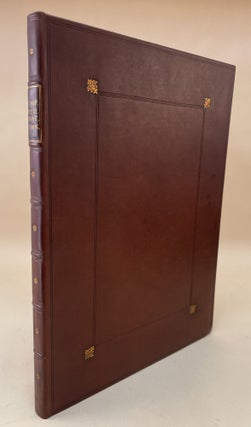Compendiosa totius anatomie delineatio, aere exarata.
Publisher Information: London: In officina Ioanni Herfordie, 1545.
Compendiosa totius anatomie delineatio. Folio. 44 leaves, unpaginated. Engraved title and 40 plates by Geminus after the woodcut illustrations in Vesalius’s Fabrica and Epitome; first and last plates in facsimile. London: [John Herford, October 1545 (colophon)]. 396 x 290 mm. Full calf in period style. Engraved title skillfully, almost invisibly repaired, some foxing and staining, but a very good copy apart from the facsimile plates. Annotations in an early hand on 17 plates and several text leaves.
First Edition of the rarest and most famous of the plagiarisms of Vesalius, which introduced Vesalian anatomy to England. Geminus published a slightly abridged version of Vesalius’s Epitome illustrated with copperplate engravings of figures from both the Fabrica and the Epitome. The Compendiosa filled an important need by providing a summary view of Vesalius’s anatomical discoveries more complete than the Epitome, less bulky and expensive than the Fabrica, and illustrated-- via the new medium of copperplate engraving--with a clarity of line impossible even for the highly skilled Venetian wood engravers employed by Vesalius. However, its publication was not authorized by Vesalius, who complained about it bitterly in his China-Root Epistle, so that even though Geminus declared Vesalius’s authorship in the headline on leaf A1, the Compendiosa has always been considered the first of the many plagiarisms of Vesalius’s anatomical works.
Geminus, whose family name was Lambert or Lambrit, emigrated to England about 1540, where he practiced the arts of engraving, printing and instrument making, and also served (despite his lack of formal training) as royal physician to Henry VIII. He introduced to the English the use of copperplate engraving for book illustration, a technique he probably brought with him from his native Belgium. A few months before the publication of the Compendiosa, Geminus produced the first engraved book illustrations published in England: Two small copperplates, also copied from Vesalius, made for Thomas Raynalde’s 1545 revision of The Byrth of Mankynde. The Compendiosa, with its forty copperplates, was the second English book illustrated with copperplates, and the first to contain an engraved title-page. Hind called this elaborate and elegant plate the “first engraving of any artistic importance produced in England.” Choulant, History and Bibliography of Anatomic Illustration, p. 193. Cushing, Bio-Bibliography of Andreas Vesalius, VI.C-2. Garrison-Morton.com 376.1. Hind, A History of Engraving and Etching from the 15th Century to the Year 1914, pp. 39-55. Norman 886.
Book Id: 46482Price: $28,500.00

